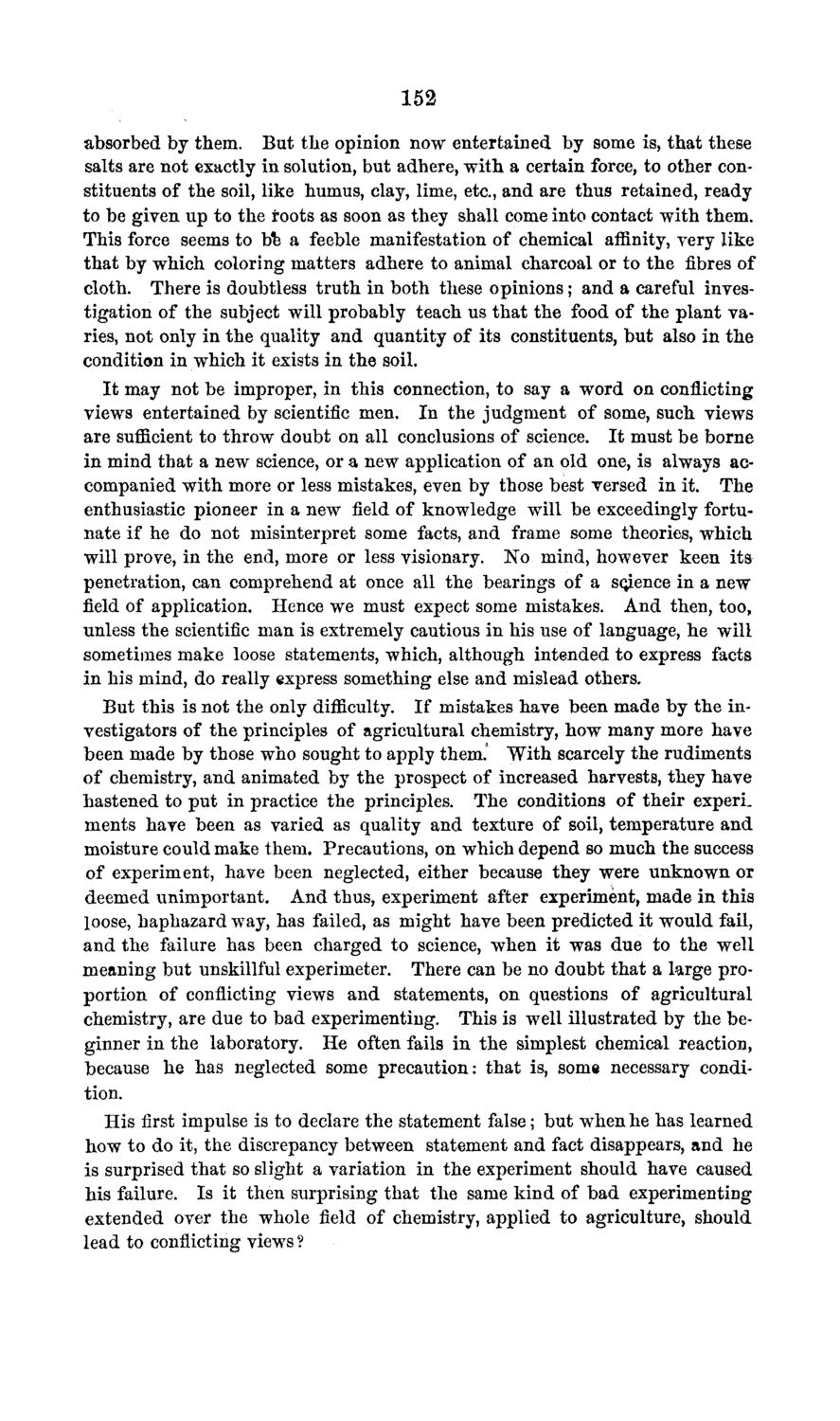| |
| |
Caption: Board of Trustees Minutes - 1869
This is a reduced-resolution page image for fast online browsing.

EXTRACTED TEXT FROM PAGE:
152 absorbed by them. But the opinion now entertained by some is, that these salts are not exactly in solution, but adhere, with a certain force, to other constituents of the soil, like humus, clay, lime, etc., and are thus retained, ready to be given up to the roots as soon as they shall come into contact with them. This force seems to be a feeble manifestation of chemical affinity, very like that by which coloring matters adhere to animal charcoal or to the fibres of cloth. There is doubtless truth in both these opinions; and a careful investigation of the subject will probably teach us that the food of the plant varies, not only in the quality and quantity of its constituents, but also ill the condition in which it exists in the soil. It may not be improper, in this connection, to say a word on conflicting views entertained by scientific men. In the judgment of some, such views are sufficient to throw doubt on all conclusions of science. It must be borne in mind that a new science, or a new application of an old one, is always accompanied with more or less mistakes, even by those best versed in it. The enthusiastic pioneer in a new field of knowledge will be exceedingly fortunate if he do not misinterpret some facts, and frame some theories, which will prove, in the end, more or less visionary. No mind, however keen it* penetration, can comprehend at once all the bearings of a science in a new field of application. Hence we must expect some mistakes. And then, too, unless the scientific man is extremely cautious in his use of language, he will sometimes make loose statements, which, although intended to express facts in his mind, do really express something else and mislead others. But this is not the only difficulty. If mistakes have been made by the investigators of the principles of agricultural chemistry, how many more have been made by those who sought to apply them.' With scarcely the rudiments of chemistry, and animated by the prospect of increased harvests, they have hastened to put in practice the principles. The conditions of their experi. ments have been as varied as quality and texture of soil, temperature and moisture could make them. Precautions, on which depend so much the success of experiment, have been neglected, either because they were unknown or deemed unimportant. And thus, experiment after experiment, made in this loose, haphazard way, has failed, as might have been predicted it would fail, and the failure has been charged to science, when it was due to the well meaning but unskillful experimeter. There can be no doubt that a large proportion of conflicting views and statements, on questions of agricultural chemistry, are due to bad experimenting. This is well illustrated by the beginner in the laboratory. He often fails in the simplest chemical reaction, because he has neglected some precaution: that is, some necessary condition. His first impulse is to declare the statement false; but when he has learned how to do it, the discrepancy between statement and fact disappears, and he is surprised that so slight a variation in the experiment should have caused his failure. Is it then surprising that the same kind of bad experimenting extended over the whole field of chemistry, applied to agriculture, should lead to conflicting views ?
| |